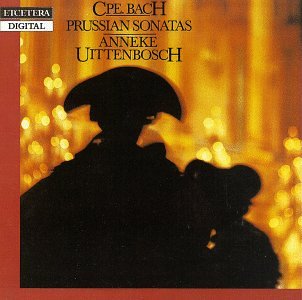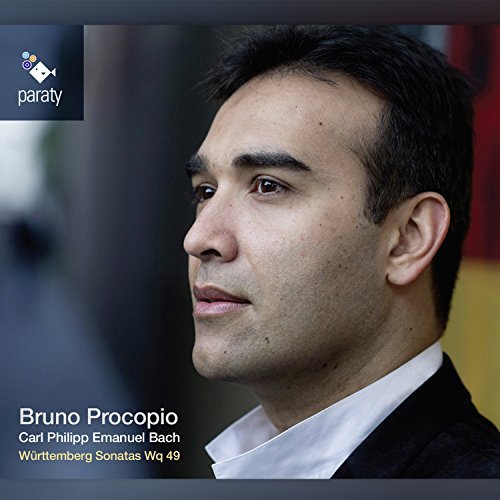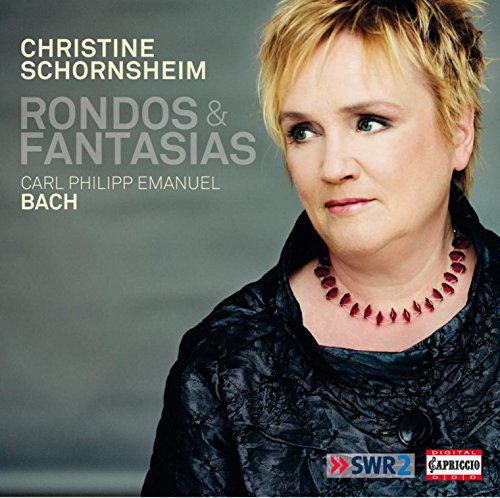- Welcome to GMG Classical Music Forum.
Recent posts
#1
The Diner / Re: What TV series are you cur...
Last post by Cato - Today at 08:19:19 AMQuote from: Karl Henning on Today at 05:42:17 AMMy sister read it with her Library Book Club, and found it a rough go. If I understand/recall aright from our @Cato, the book is a fictionalization, and I cannot help feeling that the facts of the extermination camps are sufficiently dramatic of themselves.
True!
Mrs. Cato and I listened to the "audio-book." Here is an excerpt of my thoughts on the book:
"...Joseph Mengele appears as a cartoonish villain, as do the commandant and another character who helps to run things.
One thing learned from the verbatim transcripts of Nazi meetings and the writings of Albert Speer is the great hum-drum mediocrity of Nazi bureaucrats and officers. There was no Colin-Clive mania in them, nor any smooth, James-Mason villainy, which is what you find in this novel. Mengele almost curls his moustache in this book!
Plus, there are several anachronisms and downright mistakes: in one scene, in 1943, a small American reconnaissance airplane buzzes Auschwitz! No, that did not and could not have happened! Where would or could it have been based? And why would Americans want reconnaissance of eastern Poland?! Worse, when the main character makes it to Vienna in 1945, he describes it as being something from a "John Le Carre' novel."
John le Carre's first book came out in 1961: he was a teenager during World War II !
So it was interesting from the point of view of "how did this get published" !
Anyway, it could make a decent movie, following Alfred Hitchcock's rule that mediocre books can be improved for the big screen.
So, perhaps Hitchcock's rule is being proven correct!
#2
Great Recordings and Reviews / Re: CPO diaries
Last post by Brian - Today at 07:34:22 AM
Peterson-Berger's backward musical journey continues, as the Symphony No. 4 combines elements of neoclassicism as expressed in the early 20th century with elements of romantic light music (especially in the glittering orchestration) and a certain pre-Wagner Germanic tunefulness. The symphony, in A, has a bright happy demeanor. The three shortish movements (23 minutes total) flow naturally into each other, and the finale really plays up the light music / folk qualities, with tambourine and triangle in the percussion section. The ending is scored like, and melodized like, some sort of national anthem.
Next up is the 21-minute Sleeping Beauty suite. It's lovely mid-romantic incidental music, similar to several of the other suites in this series. The last suite, another 20-minute chunk called Frosoblomster, is even lighter and fluffier, with a smaller orchestra and lesser ambitions.

The title "Solitudo," and the B minor key, suggest a work of great emotional depth, maybe something like Sibelius 6. But the result, as you might expect by now, is another light, folksy, ear-friendly symphony. Two of the movements are marked "Tranquillo," separated by a wispy "scherzando." The slow movement does create room for an expansive theme with, maybe, a little bit of longing in it. After the first three movements, the finale packs a surprise: glittering orchestration, percussion (including piano and bass drum), big themes, and a folksy Hollywoody language that strongly resembles Kurt Atterberg. The development section has a fun, low tuba solo. It's like Peterson-Berger finally decided to free himself again. There is a soft, quiet, rather lovely ending. It's my favorite individual symphonic movement of his since the huge epic middle movement from No. 2.
The Violin Concerto in F-sharp minor is a 34-minute piece, more than half of which is in the first movement. There is a definite heroic and Nordic quality to the themes of the first movement, not quite as folk-colorful as the violin concertos by Tor Aulin (for example), but also less Bruch-derived than Sinding. The movement ends quietly, leading into an andante. This also leads into the finale, through a crescendo leading to some pounding tutti chords. Then the violinist introduces a finale theme that's a lot more relaxed than you'd expect from the preceding drama. There is some chinoiserie in here, especially around 2' - even what sounds like doubled piano and celesta.
All told, the Violin Concerto may in some ways be one of the most conservative pieces in the Peterson-Berger series, but I ultimately found it one of the most enjoyable. It has more memorable material than many of the suites and incidental works. Still, the composer's overall trajectory is odd to me, from the wild visions of the first two symphonies to the gradually smaller, more domestic lives of the late works.

Albert Dietrich was a close friend of Brahms, close enough that Brahms traveled to visit him and play music with him. This kinship is clear in the Cello Sonata, which uses a Brahmsian language to map Brahmsian emotional territory: calm/wise serenity, inner doubts and turmoil, wistful melancholy, and ultimately a hard-won joyful finale - not carefree but thankful, you could say.
The short Introduction & Romance is just eight minutes of more late-Brahms-like lyricism and soft melody. I quite like all this cello music; though you could certainly say it's derivative, it derives from the best, and if you wish there was more Brahms chamber music, this should be in your library.
After that, the cello departs the program and we go to two sets of earlier piano works, Op. 6 and Op. 2. They're both collections of Klavierstücke, ten total pieces and a half-hour of listening. These are less memorable, and although you sometimes get a whiff of Brahms or Schumann, more often they are fairly generic. In a pleasant way, but not exactly an unforgettable one.

It's not just how easily influenced by @kyjo I am (though that is true!), it's also that I love the super-clean, elegant sound Howard Griffiths always gets from his Swiss orchestra. If the Franz Krommer symphony series sounds like big, beefy, quirky sequels to the final Haydn symphonies, the Franz Danzi series sounds like companions to the first three or four Franz Schubert symphonies. This is a high compliment! They are modest in scope - the longest is just 23 minutes - and absolutely bursting with colorful ideas and late-classical delights. He's learned from Haydn very, very well. Danzi is most famous now for his wind quintet/sextet music, so it is a given that his woodwind writing here is full of character. In other words, I love all of this. There isn't one wasted second.
The advocacy of Griffiths - who prefers a HIP-influenced modern instrument approach with fleet tempi and hard-stick timpani - is exactly what Danzi needs. This is extremely my thing. The only possible demerit is that occasionally I can hear the conductor vocalizing.
#3
General Classical Music Discussion / Re: What are you listening 2 n...
Last post by Irons - Today at 07:30:26 AMQuote from: Roasted Swan on Today at 07:22:18 AMvery good Isle of the Dead pretty "meh" Symphony 1 I reckon......
Well, that has knocked me back! Previn's recording of the 1st I love with a passion. Good image of Rachmaninov on cover of vinyl.
#4
General Classical Music Discussion / Re: What are you listening 2 n...
Last post by Roasted Swan - Today at 07:22:18 AMQuote from: vandermolen on Today at 04:41:23 AMRachmaninov: Symphony No.1/The Isle of the Dead
LSO/Previn
very good Isle of the Dead pretty "meh" Symphony 1 I reckon......
#5
General Classical Music Discussion / Re: What are you listening 2 n...
Last post by Spotted Horses - Today at 07:07:29 AMMozart, Symphony No 31 ("Paris"), Pinnock

This symphony seems to cater to Paris fashion, more emphasis on noise than subtlety. Nicely performed. Listened again to the first movement of the Symphony No 30, more to my liking.

This symphony seems to cater to Paris fashion, more emphasis on noise than subtlety. Nicely performed. Listened again to the first movement of the Symphony No 30, more to my liking.
#6
General Classical Music Discussion / Re: What are you listening 2 n...
Last post by AnotherSpin - Today at 07:05:01 AM
#7
General Classical Music Discussion / Re: What are you listening 2 n...
Last post by SonicMan46 - Today at 06:47:38 AMBach, CPE - Solo KB works - yesterday and today - will go through half of the 26 disc box - left a more detailed post in the CPE Thread with other performers on a variety of instruments and many reviews. Dave


#8
Composer Discussion / Re: CPE Bach (Carl Philipp Ema...
Last post by SonicMan46 - Today at 06:42:46 AMBoy, CPE's Solo KB Works, a cornucopia of variety and instruments to use! According to the Helm Catalog, he composed just over 400 'authentic' keyboard pieces (H 1 - H 402) - my collection shown below; top first 2 on harpsichord, Belder on fortepiano & clavichord, Shornsheim on tangent piano, and Markovina on piano (26 disc box), which states 'complete works' but Spanyi on BIS has recorded 40 volumes - well I'm not about to sit down and tabulate the differences - 
 For those interested, some reviews are attached. Dave
For those interested, some reviews are attached. Dave 
P.S. about a third through the 'big' box - will stop after a few more.






 For those interested, some reviews are attached. Dave
For those interested, some reviews are attached. Dave 
P.S. about a third through the 'big' box - will stop after a few more.





#9
The Diner / Re: Pictures I like
Last post by Todd - Today at 06:18:45 AMGot over to see Ole Bolle, one of ~120 large troll statues by Danish recycle artist Thomas Dambo. Statues are currently displayed on five continents. The Emerald City has five, so next time I mosey on up that way, I might stop to see one or two.

#10
The Diner / Re: Reaction Videos
Last post by Karl Henning - Today at 06:14:36 AMQuote from: LKB on Today at 06:09:19 AMI hear you and wouldn't disagree. Otoh, Burt Reynolds in his prime just might make her forget about that Cruise guy, and progress is progress.And, good for Sally Field for the opportunity to shed her Flying Nun type-casting. She's also in one of my favorite Night Gallery episodes, "Whisper," which has a subtle Poe vibe.
